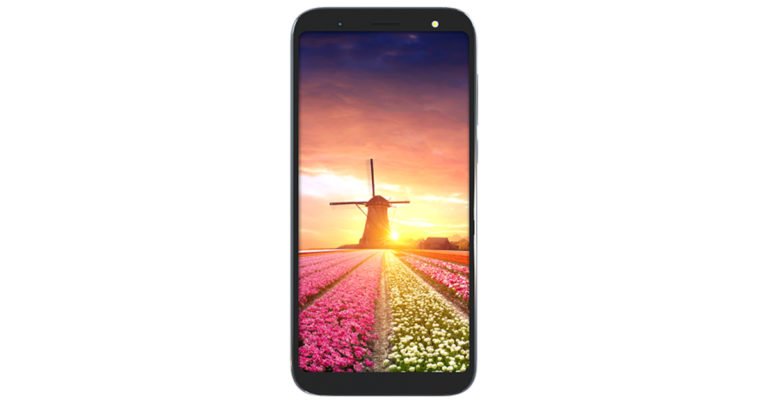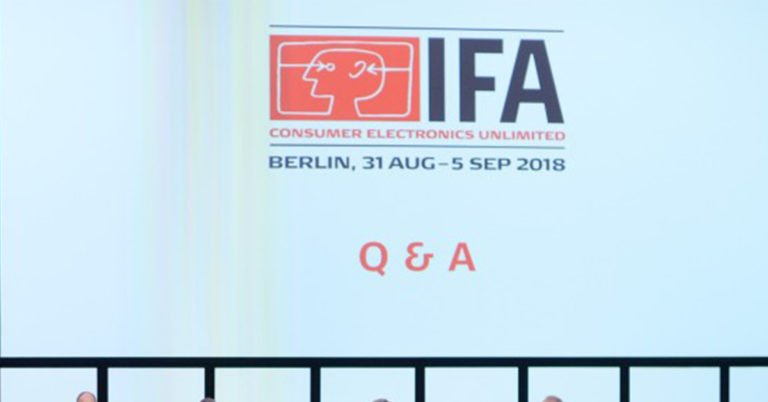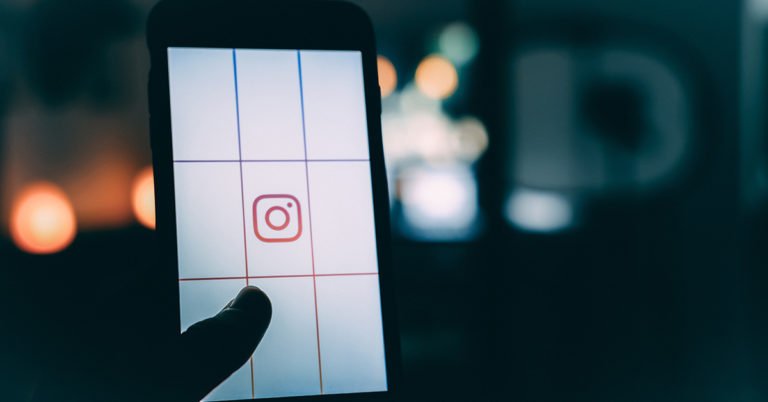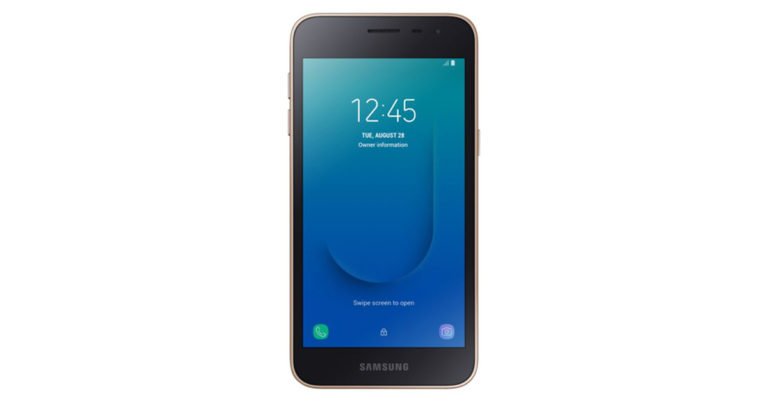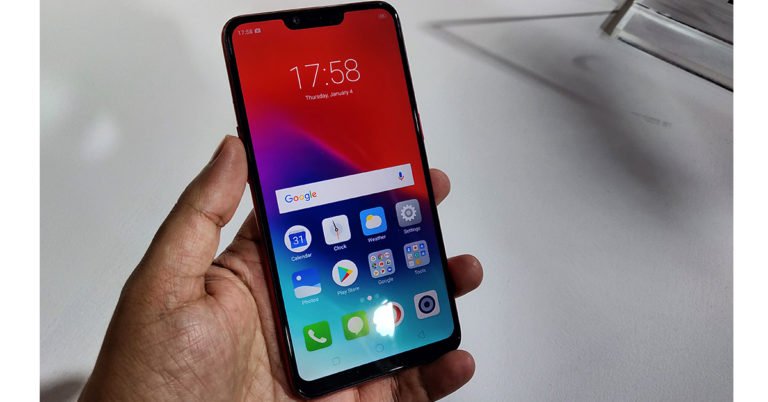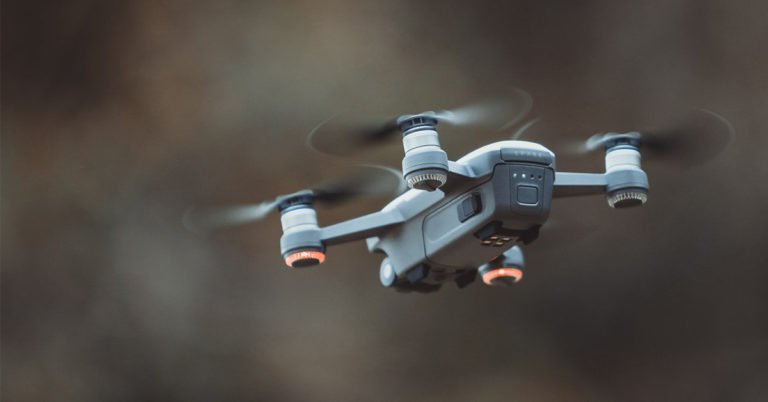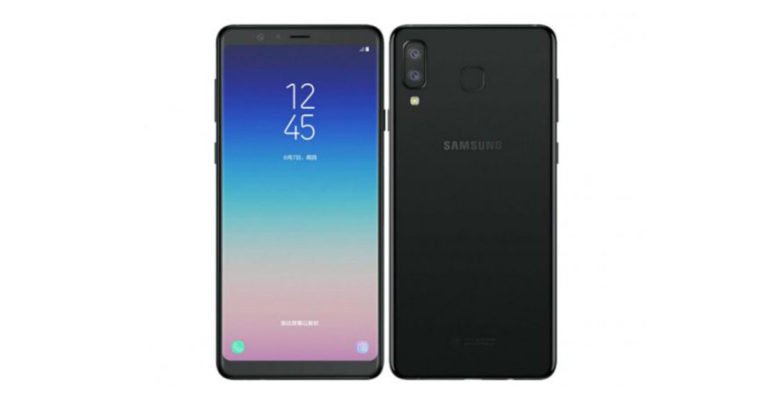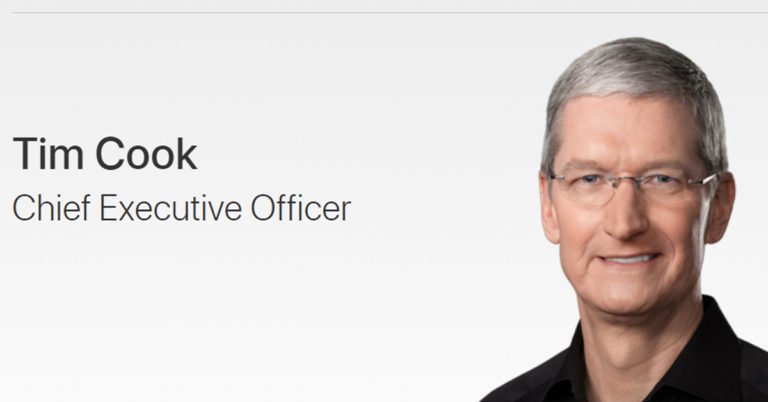Yu Ace smartphone with 4,000mAh battery launched in India: Price, specifications and more
Micromax’s subsidiary Yu Televentures has launched its Yu Ace smartphone in India. The entry level smartphone has impressive specifications for its price range including a massive 4,000mAh battery, a display aspect ratio of 18:9, face unlock and is powered by Android 8.1 Oreo.
The company has also said that Yu Ace will be getting an upgrade to Android Pie. With Yu Ace, Micromax has launched a smartphone after almost a year. The last phone launched by the company was Yu Yureka 2 in September 2017.
Specifications
Micromax Yu Ace smartphone features a 5.45-inch HD+ (720×1440 pixels) display with an aspect ratio of 18:9. The smartphone has support for dual-SIM cards and runs Android 8.1 Oreo skinned with the company’s own Steroid Launcher. Powered by a quad-core MediaTek MT6739 processor clubbed with 2GB RAM, the Yu Ace smartphone comes with 16GB internal storage.
The highlight among the specifications is the smartphone’s 4,000mAh battery. To our surprise, Yu Ace comes with a removable battery — something that is no longer common.
For imaging duties, the Yu Ace mobile comes with a 13MP rear camera clubbed with flash. For selfies and video calls, there is a 5MP front facing snapper. The smartphone has a fingerprint sensor on board and the company has also touted its Face Unlock feature.
Price and availability
The Yu Ace smartphone is priced at Rs 5,999 and it is can be bought from a Flipkart flash sale slated for September 6. Post that, the next flash sale will be held on September 13. The Yu Ace smartphone will be available in three colour variants — Charcoal Grey, Elektric Blue, and Rose Gold. Another storage variant of the smartphone — featuring 3GB RAM and 32GB onboard storage — will be rolled out at the end of next month. However, its pricing details remain unknown as of now.
For the latest gadget and tech news, and gadget reviews, follow us on Twitter, Facebook, Instagram and YouTube
IFA 2018: What to expect from Samsung, Sony, Motorola and others
Keeping CES aside, IFA is one of the biggest annual tech shows in the world. And like every year, a host of technology companies are on their way to Berlin to showcase their latest gadgets. Before the event kicks off on August 31, we decided to list down everything that you can expect from IFA 2018:
Samsung: The South Korean technology giant will reportedly be showcasing an 8K QLED TV at IFA 2018. There are also reports that the Bixby Speaker that the company announced at Samsung Galaxy Note 9 launch will also be there for a closer look at the show. It is also expected to unveil its updated wireless devices at IFA 2018.
Sony: Sony’s plans for IFA 2018 involve bringing out its updated XZ3 smartphone. An image of the smartphone was recently leaked online and it looks nearly the same as Sony Xperia XZ2 Premium. So, an upgrade in specifications of the smartphone is expected. The company is also expected to showcase its upgraded music players from its Walkman range at IFA 2018.
Blackberry: According to several media reports, BlackBerry Key2 LE – a cheaper version of BlackBerry Key2 – will be unveiled at IFA 2018. The new model of the smartphone is expected to be powered by Qualcomm Snapdragon 636 processor coupled with 4GB RAM and will house a 3,000mAh battery. In other words, its specifications are not as powerful as the BlackBerry Key2.
Huawei: Huawei is set to challenge its own P20 Pro smartphone by showcasing its Mate 20 lineup at IFA 2018. The Mate 20 lineup from Huawei also includes its Mate 20 Pro smartphone. While Huawei’s P series focuses on cameras and entertainment, the Mate series focuses on battery life and productivity. So we can say that the upcoming Huawei Mate 20 Pro is meant to be a ‘business phone’.
HTC: HTC has released a teaser – something U – for IFA 2018 and various leaks suggest that the company will be launching the HTC U12 Life at the tech expo. The smartphone is expected to come with a 6-inch display with 18:9 aspect ratio, a Qualcomm Snapdragon 636 processor clubbed with 4GB RAM and 64GB of inbuilt storage. It will also come with a dual rear camera setup.
Motorola: Motorola is totally expected to unveil its iPhone X inspired P30 smartphone at IFA 2018. The smartphone was announced in China earlier this month, and IFA 2018 will be the perfect platform to showcase it globally.
Lenovo: Speaking about Lenovo, the company is expected to showcase its updated laptops. There is also a possibility of seeing a new ThinkPad at the IFA 2018.
Nokia: If rumours are correct, then HMD Global will be showcasing a new high-end smartphone powered by Snapdragon 845 — dubbed Nokia 9. It goes without saying that the smartphone is expected to come with other high end specifications too.
LG: Reports suggest that LG will be launching its new flagship smartphone — V40 ThinQ — which is said to sport five cameras in total. The company is also expected to showcase an exoskeleton robot that it has been teasing off late.
Dell: No guesses for this one. The company will be updating the specifications of its laptop and PC line-up for IFA 2018. Other innovations are also expected, but currently there’s no official word about it.
For the latest gadget and tech news, and gadget reviews, follow us on Twitter, Facebook, Instagram and YouTube
Instagram rolls out new tools to curb spamming on its platform
Facebook-owned photo-sharing app Instagram has now come up with new features that are expected to bring more transparency to the platform. All the new features that have been launched indicate that Instagram is seriously trying to reduce the number of fake accounts and spamming on its platform. This is bound to make the app more user friendly for people. Here are the new features to look out for:
- About This Account: The name explains what the feature does, isn’t it? With this feature, whenever you see an advertisement on Instagram, you’ll be able to find out more about the account. General information about the account like its location, username changes in the past year among other details will be visible to the users, bringing in more transparency. Users would know that the accounts they interact with are exactly who they say they are. This would also stop any fake accounts from spreading misinformation.
- Support for third-party authentication apps: Soon, Instagram will enable its user to log into their Instagram accounts using third-party authentication apps. In order to do this, just click on the ‘Menu’ icon on your profile and then go to ‘Settings’. After this, scroll down and select ‘Two factor authentication’ and then click on ‘Authentication App’. Instagram will then send a code to the authentication app you have installed. All you have then have to do is retrieve the code from the app and enter it on Instagram and two factor authentication will be enabled on your account. This feature has started rolling out and will be available globally in a few weeks.
- Increased access to verification: Till now, the method of getting your Instagram account verified was not clear. But now, the app is changing that. Users can now initiate the process of getting a verified account via a form available on the platform. It can be requested for by visiting ‘Settings’ on your profile and choosing ‘Request Verification.’ Then, the user will be required to share their username, their full name, and their business/legal identification. However, don’t get your hopes too high because, according to Instagram, requesting for verification doesn’t guarantee that your account will be verified.
UE Wonderboom Freestyle Bluetooth speaker review: Louder than you can imagine
Ultimate Ears or UE is a sub brand of Logitech and they have been making some great audio accessories for mobile phones. The latest to come to the Indian soil is the UE Wonderboom Freestyle Bluetooth speaker that comes in a variety of colours. We call it the grenade design as it reminds us of a military grenade, especially when you look at the Avacado colour of this speakers.
So let’s start by talking about its design and built. The UE Wonderboom Freestyle Bluetooth speaker is a rugged BT speaker that can be dropped from a height of up to 5 feet and nothing will happen to it. We tried it couple of times and really it didn’t wither at all. Over that, this speaker has IPX7 rating, which means it can be submerged in water up to 1 meter for 30 minutes and it will still be able to play your favourite tunes after the dip. We tried that too and it worked as it worked before, just wipe the water off and play the tunes as is. The power and BT buttons are located on the top along with the play and skip button, which is basically the logo of the device. The front features the volume up and down buttons which you cannot miss because of their exceptionally large size. The rear bottom part hides the charging port. Mesh cloth and rubber is what this device is made up of. It also comes with a hook loop in case you want to hang it somewhere around the house. Also, you can pair it with one more UE Wonderboom speaker to get that extra sound when throwing the party or having friends over on game night.
Setting it up was a no brainer and we were up and running in under a minute. Just turn on your mobiles Bluetooth, press the power button followed by the BT button on the speaker and pair the devices. Now for the fun part—its resonance. It is mind bogglingly loud. It is so loud that it can wake the neighbours up. We did not expect this much sound from a small device like this. The bass is thumpy and the highs are clear, lows not so much. The battery backup is good too, we got about 9.5 hours of playback from this device. All in all, a great buy for Rs 6,995 and oh yes, the wireless range for UE Wonderboom Freestyle Bluetooth speaker is 100 feet and it works through walls as well.
Pros: Good base, waterproof, Shock resistant
Cons: Low notes could have been better
For the latest gadget and tech news, and gadget reviews, follow us on Twitter, Facebook, Instagram and YouTube
The power and BT buttons are located on the top along with the play and skip button, which is basically the logo of the device. The front features the volume up and down buttons which you cannot miss because of their exceptionally large size. The rear bottom part hides the charging port. Mesh cloth and rubber is what this device is made up of. It also comes with a hook loop in case you want to hang it somewhere around the house. Also, you can pair it with one more UE Wonderboom speaker to get that extra sound when throwing the party or having friends over on game night.
Setting it up was a no brainer and we were up and running in under a minute. Just turn on your mobiles Bluetooth, press the power button followed by the BT button on the speaker and pair the devices. Now for the fun part—its resonance. It is mind bogglingly loud. It is so loud that it can wake the neighbours up. We did not expect this much sound from a small device like this. The bass is thumpy and the highs are clear, lows not so much. The battery backup is good too, we got about 9.5 hours of playback from this device. All in all, a great buy for Rs 6,995 and oh yes, the wireless range for UE Wonderboom Freestyle Bluetooth speaker is 100 feet and it works through walls as well.
Pros: Good base, waterproof, Shock resistant
Cons: Low notes could have been better
For the latest gadget and tech news, and gadget reviews, follow us on Twitter, Facebook, Instagram and YouTube
 The power and BT buttons are located on the top along with the play and skip button, which is basically the logo of the device. The front features the volume up and down buttons which you cannot miss because of their exceptionally large size. The rear bottom part hides the charging port. Mesh cloth and rubber is what this device is made up of. It also comes with a hook loop in case you want to hang it somewhere around the house. Also, you can pair it with one more UE Wonderboom speaker to get that extra sound when throwing the party or having friends over on game night.
Setting it up was a no brainer and we were up and running in under a minute. Just turn on your mobiles Bluetooth, press the power button followed by the BT button on the speaker and pair the devices. Now for the fun part—its resonance. It is mind bogglingly loud. It is so loud that it can wake the neighbours up. We did not expect this much sound from a small device like this. The bass is thumpy and the highs are clear, lows not so much. The battery backup is good too, we got about 9.5 hours of playback from this device. All in all, a great buy for Rs 6,995 and oh yes, the wireless range for UE Wonderboom Freestyle Bluetooth speaker is 100 feet and it works through walls as well.
Pros: Good base, waterproof, Shock resistant
Cons: Low notes could have been better
For the latest gadget and tech news, and gadget reviews, follow us on Twitter, Facebook, Instagram and YouTube
The power and BT buttons are located on the top along with the play and skip button, which is basically the logo of the device. The front features the volume up and down buttons which you cannot miss because of their exceptionally large size. The rear bottom part hides the charging port. Mesh cloth and rubber is what this device is made up of. It also comes with a hook loop in case you want to hang it somewhere around the house. Also, you can pair it with one more UE Wonderboom speaker to get that extra sound when throwing the party or having friends over on game night.
Setting it up was a no brainer and we were up and running in under a minute. Just turn on your mobiles Bluetooth, press the power button followed by the BT button on the speaker and pair the devices. Now for the fun part—its resonance. It is mind bogglingly loud. It is so loud that it can wake the neighbours up. We did not expect this much sound from a small device like this. The bass is thumpy and the highs are clear, lows not so much. The battery backup is good too, we got about 9.5 hours of playback from this device. All in all, a great buy for Rs 6,995 and oh yes, the wireless range for UE Wonderboom Freestyle Bluetooth speaker is 100 feet and it works through walls as well.
Pros: Good base, waterproof, Shock resistant
Cons: Low notes could have been better
For the latest gadget and tech news, and gadget reviews, follow us on Twitter, Facebook, Instagram and YouTube Samsung Galaxy J2 Core ‘Android Go’ Edition launched in India: Price, specifications and more
Samsung’s first Android Go smartphone – Galaxy J2 Core has been launched in India. The announcement about the smartphone was made at Google for India 2018 – Google’s annual event – in New Delhi. It is the first time that Samsung has partnered with Google to unveil an Android Go device. Samsung Galaxy J2 Core was announced in India last week and it runs Android 8.1 Oreo (Go Edition). It is also touted to enhance selfies with a dedicated Beauty mode.
Price and availability
Samsung Galaxy J2 Core is priced at Rs 6,190 and competes with the likes of Micromax Bharat Go and Lava Z61 – both of which are Android Go smartphones too. The smartphone is available in Gold, Blue and Black colour variants and can be bought from retail stores or Samsung’s eShop in the country.
Specifications
Samsung’s first Android Go smartphone features a 5-inch QHD TFT display and is powered by a quad-core Exynos 7570 processor clubbed with 1GB RAM. The smartphone comes with 8GB of internal storage and can hold a microSD card of up to 256GB.
For imaging duties, there is an 8MP primary camera with an f/2.2 aperture and an LED flash. There is a 5MP front facing snapper for selfies and video calls.
Samsung Galaxy J2 Core houses a 2,600mAh battery that is claimed to offer an all-day experience on a single charge. The smartphone comes with 4G VoLTE, Wi-Fi, Bluetooth v4.2, GPS, Micro-USB, and a 3.5mm headphone jack as connectivity options. Note that the smartphone does not come with a fingerprint sensor or a face unlock feature.
Speaking about the company’s newly launched smartphone, Sumit Walia, Director of Mobile business at Samsung India said, “Galaxy J2 Core reiterates Samsung’s commitment towards meaningful innovations that delight our customers. We are pleased to integrate industry-first smart memory management solutions that allow apps or content on the memory card. We are also pleased to partner with Google in bringing the latest Android experience for entry-level smartphones with Oreo (Go Edition) on Galaxy J2 Core.”
For the latest gadget and tech news, and gadget reviews, follow us on Twitter, Facebook, Instagram and YouTube
Google for India 2018: All you need to know
Technology giant Google’s fourth edition of ‘Google for India’ took place at an event in New Delhi today. As expected, there were a number of announcements that were made at Google’s annual event. India has the second largest population of internet users, and hence is a very important market for Google. Here are the key announcements that Google spoke about at its event today:
- Google Tez gets re-branded at Google Pay: The technology giant’s payment app Google Tez will now be rebranded to Google Pay. Google is eyeing to get over 15,000 retail stores in India and 2,000 online merchants on its Google Pay app by Diwali 2018. It also talked about its plans to bring rich interactions to its payment app. Businesses and merchants can also start using Google Pay to pay for Google Ads. Google Pay is also collaborating with Federal Banks, HDFC Bank, ICICI Bank among others for loans. It is worth noticing that the app will only act as an intermediary and that the customer will only be able to get these pre-approved loans via banks. This feature will start appearing on Google Pay app in the next few weeks.
- Google Station to reach over 12,000 villages: Google announced today that it has joined hands with Andhra Pradesh State FiberNet Ltd (APSFNL) to bring Google Station to over 12,000 villages, using the Station Wi-Fi model. This move by the technology giant will help in providing internet access to around 10 million people in the country. Prior to this, the company had partnered with RailTel and provided Wi-Fi access across 400 Indian railway stations.
- Google will promote Indian language content online with Project Navlekha: Another announcement that Google made today was that it is working with Indian language publishers and aims to bring online content that is more relevant to audience in the country. As of now, the amount of online content that is available in Indian languages is only 1% of that available in English. With its new Project Navlekha, Google aims to enable publishers working in Indian regional languages to bring their content online. Navlekha is a Sanskrit word that means ‘a new way to write’. According to Google, just with help of a simple application, publishers will be able to create web pages from scanned copies of pages. Google claims that among 135,000 of print publishers in India, 90% do not have a website. With Project Navlekha, it eyes to change that with an AI tool that will render any PDF file with Indian language content into editable text.
- Users to get the option of listening to web pages: At its Google for India conference, Google has also announced a number of upcoming features for Google Go and Android (Go edition) OS. The key announcement was that Google’s AI based technology will enable users to “listen to webpages.” Users will now have two brand new features that they can access — bilingual news feed and audio playback. Basically, Google News Feed is set to become bilingual and will support both English and Hindi. In a few months, this feature will arrive on Google Go as well. And with the audio playback feature, users will be able to listen to webpages. The new feature by Google uses natural language processing and speech synthesis AI and can support 28 languages. Furthermore, users will be able to listen to web pages even if they are using a 2G connection.
Realme 2 with notch display and 4,230 mAh battery launched in India: Specs, price and more
Realme is the sub-brand of Oppo mobiles that just got independent of the parent company and apparently is doing really well in India. Today at an event in New Delhi the company has launched Realme 2, the first smartphone in India in the sub Rs 10K category that sports a notch display. Available in two variations and 3 colours (Red, Black and Blue) the smartphone does look similar to the previous edition with its own distinct features.
Realme 2 technical specifications
The Realme 2 is a smartphone that screams for attention. It has been built on the same crystal design format as previously seen on other Oppo smartphones. The Realme 2 features a 6.2-inch HD+ (1,520×720 pixels) ICP touch screen with 19:9 aspect ratio. Yes, it does have a notch that has most of the front sensors and an 8MP (f/2.2 aperture) selfie camera. At the rear users will get a dual camera setup (horizontally located) featuring a 13MP primary sensor with f/2.2 aperture and 2MP secondary camera with f/2.4 aperture. A fingerprint reader at the back has also been thrown in the mix. Under the hood, the Realme 2 sports a Qualcomm Snapdragon 450 chipset. The mobile is available in two versions. One with 3GB RAM and 32GB storage and other with 4GB RAM and 64GB storage. The memory is expandable by up to 256GB on both the variants. For graphical duties this smartphone has Adreno 506 GPU on it. As for the battery the Realme 2 houses a 4,230 mAh battery and come with 10W charger in the box. The phone is 8.2mm thick and weighs 168grams. To sum up the connectivity features the Realme 2 has Bluetooth v4.2, 4G VOLTE, GPS/A-GPS, micro USB port and 3.5mm audio jack.
Realme 2 price
The 3GB RAM and 32GB storage variant is priced at Rs 8,990 and the 4GB RAM and 64GB storage version is priced at Rs 10,990. The phone will be available exclusively on Flipkart and will start sales on September 4. There is a Rs 750 discount also running when the phone is bought using HDFC bank cards. Also, up to 120 GB data can be drawn by Reliance JIO users when they buy this smartphone, along with Rs 4,200 benefits.
For the latest gadget and tech news, and gadget reviews, follow us on Twitter, Facebook, Instagram and YouTube.
Under the hood, the Realme 2 sports a Qualcomm Snapdragon 450 chipset. The mobile is available in two versions. One with 3GB RAM and 32GB storage and other with 4GB RAM and 64GB storage. The memory is expandable by up to 256GB on both the variants. For graphical duties this smartphone has Adreno 506 GPU on it. As for the battery the Realme 2 houses a 4,230 mAh battery and come with 10W charger in the box. The phone is 8.2mm thick and weighs 168grams. To sum up the connectivity features the Realme 2 has Bluetooth v4.2, 4G VOLTE, GPS/A-GPS, micro USB port and 3.5mm audio jack.
Realme 2 price
The 3GB RAM and 32GB storage variant is priced at Rs 8,990 and the 4GB RAM and 64GB storage version is priced at Rs 10,990. The phone will be available exclusively on Flipkart and will start sales on September 4. There is a Rs 750 discount also running when the phone is bought using HDFC bank cards. Also, up to 120 GB data can be drawn by Reliance JIO users when they buy this smartphone, along with Rs 4,200 benefits.
For the latest gadget and tech news, and gadget reviews, follow us on Twitter, Facebook, Instagram and YouTube.
 Under the hood, the Realme 2 sports a Qualcomm Snapdragon 450 chipset. The mobile is available in two versions. One with 3GB RAM and 32GB storage and other with 4GB RAM and 64GB storage. The memory is expandable by up to 256GB on both the variants. For graphical duties this smartphone has Adreno 506 GPU on it. As for the battery the Realme 2 houses a 4,230 mAh battery and come with 10W charger in the box. The phone is 8.2mm thick and weighs 168grams. To sum up the connectivity features the Realme 2 has Bluetooth v4.2, 4G VOLTE, GPS/A-GPS, micro USB port and 3.5mm audio jack.
Realme 2 price
The 3GB RAM and 32GB storage variant is priced at Rs 8,990 and the 4GB RAM and 64GB storage version is priced at Rs 10,990. The phone will be available exclusively on Flipkart and will start sales on September 4. There is a Rs 750 discount also running when the phone is bought using HDFC bank cards. Also, up to 120 GB data can be drawn by Reliance JIO users when they buy this smartphone, along with Rs 4,200 benefits.
For the latest gadget and tech news, and gadget reviews, follow us on Twitter, Facebook, Instagram and YouTube.
Under the hood, the Realme 2 sports a Qualcomm Snapdragon 450 chipset. The mobile is available in two versions. One with 3GB RAM and 32GB storage and other with 4GB RAM and 64GB storage. The memory is expandable by up to 256GB on both the variants. For graphical duties this smartphone has Adreno 506 GPU on it. As for the battery the Realme 2 houses a 4,230 mAh battery and come with 10W charger in the box. The phone is 8.2mm thick and weighs 168grams. To sum up the connectivity features the Realme 2 has Bluetooth v4.2, 4G VOLTE, GPS/A-GPS, micro USB port and 3.5mm audio jack.
Realme 2 price
The 3GB RAM and 32GB storage variant is priced at Rs 8,990 and the 4GB RAM and 64GB storage version is priced at Rs 10,990. The phone will be available exclusively on Flipkart and will start sales on September 4. There is a Rs 750 discount also running when the phone is bought using HDFC bank cards. Also, up to 120 GB data can be drawn by Reliance JIO users when they buy this smartphone, along with Rs 4,200 benefits.
For the latest gadget and tech news, and gadget reviews, follow us on Twitter, Facebook, Instagram and YouTube. Flying drones to be legalized in India starting December
Ministry of Civil Aviation today finalised a new drone policy according to which flying Remotely Piloted Aircraft System (RPAS), or in simpler words – drones – will be legal across India starting December 1, 2018.
Currently, prior permission from government authorities is required for flying drones and it is also considered illegal for flying them for civilian purposes.
Those wanting to use drones will be required to do a one-time registration of the drones, as well as their pilots and owners.
After this, a request for permission to fly the drone has to be made on a mobile app. This has to be done each time the user wishes to fly the drone. The request will be permitted or denied via an automated process. If denied, the drone will not be able to take off as it’ll require a digital permit.
Even if a drone gets the permission to fly, it can only do so during the day time. The Ministry of Civil Aviation has also said that the maximum altitude at which a drone can fly is 400-ft.
There are also ‘No Drone Zones’ that have been defined by the Ministry of Civil Aviation. Areas coming under ‘No Drone Zones’ are areas around airports, near international border, Vijay Chowk in Delhi, State Secretariat Complex in state capitals, strategic locations, vital military installations etc. The regulations announced today are titled Regulations 1.0 because they are the first set of rules given by the government regarding this subject. The Ministry defined drones as a technology platform that has a number of applications including photography, agriculture, insurance and even infrastructure asset management. Speaking about the regulations issued, Minister of Civil Aviation, Suresh Prabhu said, “Today we start an exciting new chapter in India’s aviation history by allowing commercial use of drones. I am sure that many new and exciting applications will emerge that will propel India’s economy forward. Our progressive regulations will encourage a vast Made in India drone industry.” For the latest gadget and tech news, and gadget reviews, follow us on Twitter, Facebook, Instagram and YouTubePress Release on Drones: pic.twitter.com/6ZlPeLJpxB
— MoCA_GoI (@MoCA_GoI) August 27, 2018
Samsung Galaxy A8 Star launched in India: Specifications, price and more
Just two days after Samsung launched its flagship phablet – Note 9 – in India, it has taken wraps off its Galaxy A8 Star mobile phone too. The smartphone was launched in China in June this year where it was dubbed as Samsung Galaxy A9 Star. In India, it is priced at Rs 34,900 and competes directly with OnePlus 6 and Asus Zenfone 5Z.
Samsung Galaxy A8 Specifications
Samsung Galaxy A8 Star features a 6.3-inch Full HD+ Super AMOLED Infinity display which comes with an aspect ratio of 18.5:9. The smartphone comes with 2.5D and 3D curved glass body coupled with metallic frames. Powered by Qualcomm Snapdragon 660 processor clubbed with 6GB RAM, the smartphone comes with 64GB onboard storage and can hold a microSD card of up to 400GB.
For imaging duties, Samsung Galaxy A8 Star comes with what it calls as ‘Dual Intellicam’ on its back panel with 16MP +24MP sensors. For selfies and video calls, there is a 24MP front facing snapper.
According to the company, the rear cameras of this smartphone can detect the lighting conditions and then accordingly choose the perfect lens to click photos. It also has a Live Focus feature – which is the South Korean technology giant’s take on the Bokeh effect.
Samsung Galaxy A8 Star houses a 3,700mAh battery and comes with a pre-installed Secure Folder functionality. This feature can be used to protect important files and sensitive content in the smartphone.
The smartphone also comes with Samsung Pay, face recognition technology and the company’s digital assistant – Bixby.
Price and availability
Samsung Galaxy A8 Star is priced at Rs 34,900 and will be available in two colours — Midnight Black and Ivory White. It will be available on Amazon India’s website starting August 27. It will hit the retail stores by September 5.
For the latest gadget and tech news, and gadget reviews, follow us on Twitter, Facebook, Instagram and YouTube
Tim Cook completes 7 years as Apple CEO: Seven innovations and products we have seen under his leadership
It was 7 years ago on this day that Tim Cook stepped into the role of the CEO at Apple. And a lot has changed at the Cupertino based technology giant since then. The company’s biggest achievement under his leadership came just a few days back when Apple was announced to the world’s first trillion dollar company. With Tim Cook as Apple’s CEO, even Apple Services business has shown a double digit growth. What lies behind this massive growth in business are the number of innovations that are happening at Apple and the new products the company is coming up with. And with Tim Cook as the leader, there are many on the list. Here, we list down 7 new Apple products and services we have seen under Tim Cook’s leadership:
In This Article


